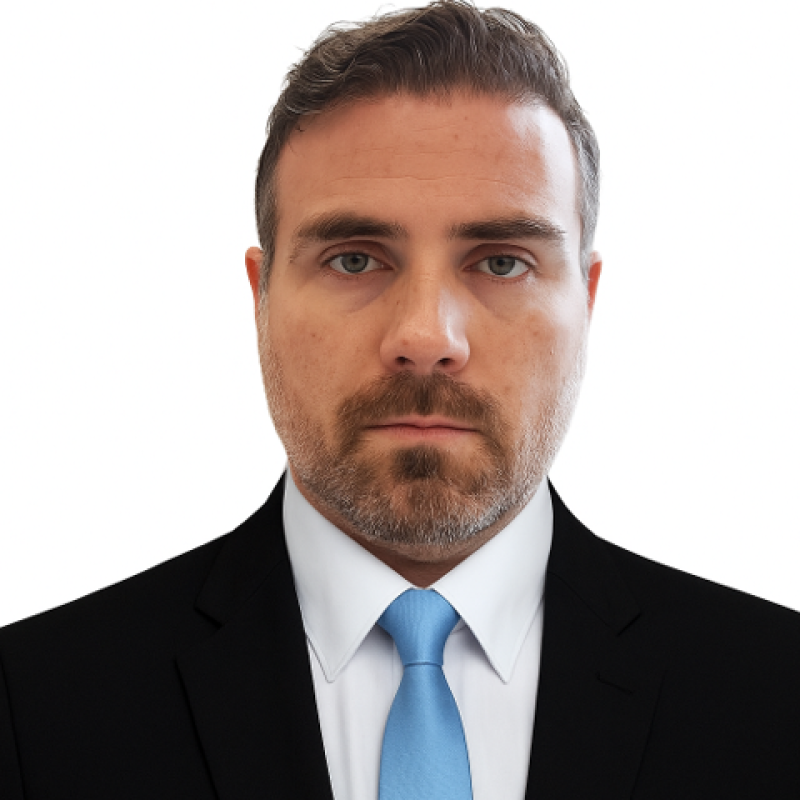Organizational velocity is the real advantage in today’s workplace

Key Points
As the 9-9-6 model grows, leaders are weighing hours worked vs. impact. One way forward? Focus on organizational velocity.
Marcos Leitão, Global Sourcing Manager at Etex, believes that true competitive advantage comes from dismantling bureaucracy and leveraging technology to achieve internal speed, rather than from unsustainable work models.
He emphasizes that combining local decision-making agility with AI-driven automation is essential for organizations contending with limited talent resources.
Leitão points out that AI is not a silver bullet, stressing that successful implementation requires a foundational understanding of existing processes and addressing the new skills gaps it creates.
When I first arrived in Europe, I worked 12-14 hours a day. It was a nightmare. The real competitive advantage isn't found in endless hours, but in organizational velocity, dismantling bureaucracy, being pragmatic, and leveraging game-changing tools like AI to react to the market with unparalleled speed.

Marcos Leitão
Global Sourcing Manager
Etex
The promise of AI hinges on freeing workers from mundane, repeatable tasks. In practice, however, some organizations have used the increased efficiency to demand more time and more output from their workers. The growing 9-9-6 model points to a renewed focus on hours worked over impact. But is that the most efficient way to work? Some claim it’s bad for innovation. European startups are actively resisting the pressure to adopt it, while others are simply being outpaced by those who embrace it.
To dig deeper into the trends, we spoke with Marcos Leitão, a senior executive with a strong international track record in Strategic Procurement, Supply Chain, and Operations. As the current Global Sourcing Manager at building materials manufacturer Etex, Leitão has decades of experience leading organizational transformations for multinational companies in the automotive, chemical, and construction industries. Drawing on personal experience, Leitão champions a fundamental shift in thinking, prioritizing strategy over sheer effort. “When I first arrived in Europe, I worked 12-14 hours a day. It was a nightmare. The real competitive advantage isn’t found in endless hours, but in organizational velocity, dismantling bureaucracy, being pragmatic, and leveraging game-changing tools like AI to react to the market with unparalleled speed,” he says.
A three-day reality check: Comparing the European mindset with places that embrace 9-9-6, like China, Leitão says it’s hard to compete on turnaround time alone. “We made a huge effort and were able to deliver a prototype in two weeks. We anticipated everything, bought the materials, and paid for express shipment. The feedback we received was blunt: our two-week delivery time was unacceptable because a local supplier in China was capable of delivering the same prototype in just three days.” This stark contrast in delivery times highlights fundamental cultural differences in the workplace.
The burnout bill: But while some cultures may be able to sustain extreme work hours, this model is not universally viable. Particularly within a Western cultural context, such intensity quickly leads to exhaustion and diminishing returns. “You can work for three months this way, but then you’re not able to continue,” Leitão emphasizes.
So if grinding out more hours isn’t the answer, what is? Instead, the real key to velocity is dismantling the bureaucratic friction that slows large organizations, Leitão believes. He clarifies that the goal isn’t to remove oversight. It’s to empower local leaders with the trust and authority to make faster decisions, improving strategic agility.
Local agility: In multinational corporations, maintaining alignment with global leadership is essential, but so is enabling regional teams to act fast. Effective organizations strike a balance between centralized oversight and local decision-making, ensuring that approvals don’t slow down their response to shifting market demands. “It’s important to keep the approval process in place, but sometimes you need to spend thirty days approving something. In multinational companies, decisions are often centralized. Even if you are responsible for a region, you must escalate the approval process to top management on another continent. That means you cannot react quickly to the market, and that speed is important.”
Adding to the pressure is what Leitão describes as a major talent shortage. But in his view, this scarcity is also a catalyst for innovation that makes smarter processes and new technology a necessity. He views tools like AI and machine learning as a powerful response to both the process and people problems, noting, “In an environment with a lack of manpower, you can use these tools to reduce operational work and speed up some processes.”
The silver lining: This scarcity forces companies to innovate. The need for creative solutions to talent gaps, such as leveraging experienced retirees, demonstrates a strategic pivot away from traditional recruitment and towards maximizing available human capital. Leitão points to a creative solution he’s observed as an example. “In Brazil, they are using the strategy of bringing retired people back into the market. Because there aren’t enough new people joining the workforce, they are looking for that experience.”
The game changers: AI and machine learning offer a transformative solution by automating monotonous, repetitive tasks, thereby freeing up human talent to focus on more complex, value-added work. “Artificial intelligence and machine learning are the game changers for the market. When you have somebody on your team doing the same repetitive task every single day, that is precisely the work you can use AI to do.”
AI’s talent problem: Despite its potential, AI is not a cure-all. Its effective integration demands specialized expertise, creating a new and significant skills gap that organizations must proactively address to truly harness its benefits, Leitão notes. “But using artificial intelligence is not just about texting something into ChatGPT. You need people with real knowledge in AI to build the machine learning structure. That creates a new skills gap, which will be a potential issue in the near future.”
What emerges from the conversation is a clear theme: improving efficiency requires organizations to act with intention. In a market where speed is a key advantage, leaders must consciously decide on their approach. For Leitão, this begins with a foundational, step-by-step process of building a smarter, faster organization from the inside out.
He champions a “back to the basics” philosophy, explaining that any successful implementation, whether for AI or a system like SAP, must begin with a foundational understanding of the existing process. This methodical approach ensures that technology serves well-defined objectives and gains crucial team buy-in by demonstrating how automation alleviates tedious, operational burdens. “After you invite your team to build the standard process, you can identify what to optimize and then sell the benefits to your team. No one likes to do operational tasks, so when you show them how automation can remove that work, they will support the initiative. I really think that this is the right way to do it.”
Related articles
TL;DR
As the 9-9-6 model grows, leaders are weighing hours worked vs. impact. One way forward? Focus on organizational velocity.
Marcos Leitão, Global Sourcing Manager at Etex, believes that true competitive advantage comes from dismantling bureaucracy and leveraging technology to achieve internal speed, rather than from unsustainable work models.
He emphasizes that combining local decision-making agility with AI-driven automation is essential for organizations contending with limited talent resources.
Leitão points out that AI is not a silver bullet, stressing that successful implementation requires a foundational understanding of existing processes and addressing the new skills gaps it creates.

Marcos Leitão
Etex
Global Sourcing Manager

Global Sourcing Manager
The promise of AI hinges on freeing workers from mundane, repeatable tasks. In practice, however, some organizations have used the increased efficiency to demand more time and more output from their workers. The growing 9-9-6 model points to a renewed focus on hours worked over impact. But is that the most efficient way to work? Some claim it’s bad for innovation. European startups are actively resisting the pressure to adopt it, while others are simply being outpaced by those who embrace it.
To dig deeper into the trends, we spoke with Marcos Leitão, a senior executive with a strong international track record in Strategic Procurement, Supply Chain, and Operations. As the current Global Sourcing Manager at building materials manufacturer Etex, Leitão has decades of experience leading organizational transformations for multinational companies in the automotive, chemical, and construction industries. Drawing on personal experience, Leitão champions a fundamental shift in thinking, prioritizing strategy over sheer effort. “When I first arrived in Europe, I worked 12-14 hours a day. It was a nightmare. The real competitive advantage isn’t found in endless hours, but in organizational velocity, dismantling bureaucracy, being pragmatic, and leveraging game-changing tools like AI to react to the market with unparalleled speed,” he says.
A three-day reality check: Comparing the European mindset with places that embrace 9-9-6, like China, Leitão says it’s hard to compete on turnaround time alone. “We made a huge effort and were able to deliver a prototype in two weeks. We anticipated everything, bought the materials, and paid for express shipment. The feedback we received was blunt: our two-week delivery time was unacceptable because a local supplier in China was capable of delivering the same prototype in just three days.” This stark contrast in delivery times highlights fundamental cultural differences in the workplace.
The burnout bill: But while some cultures may be able to sustain extreme work hours, this model is not universally viable. Particularly within a Western cultural context, such intensity quickly leads to exhaustion and diminishing returns. “You can work for three months this way, but then you’re not able to continue,” Leitão emphasizes.
So if grinding out more hours isn’t the answer, what is? Instead, the real key to velocity is dismantling the bureaucratic friction that slows large organizations, Leitão believes. He clarifies that the goal isn’t to remove oversight. It’s to empower local leaders with the trust and authority to make faster decisions, improving strategic agility.
Local agility: In multinational corporations, maintaining alignment with global leadership is essential, but so is enabling regional teams to act fast. Effective organizations strike a balance between centralized oversight and local decision-making, ensuring that approvals don’t slow down their response to shifting market demands. “It’s important to keep the approval process in place, but sometimes you need to spend thirty days approving something. In multinational companies, decisions are often centralized. Even if you are responsible for a region, you must escalate the approval process to top management on another continent. That means you cannot react quickly to the market, and that speed is important.”
Adding to the pressure is what Leitão describes as a major talent shortage. But in his view, this scarcity is also a catalyst for innovation that makes smarter processes and new technology a necessity. He views tools like AI and machine learning as a powerful response to both the process and people problems, noting, “In an environment with a lack of manpower, you can use these tools to reduce operational work and speed up some processes.”
The silver lining: This scarcity forces companies to innovate. The need for creative solutions to talent gaps, such as leveraging experienced retirees, demonstrates a strategic pivot away from traditional recruitment and towards maximizing available human capital. Leitão points to a creative solution he’s observed as an example. “In Brazil, they are using the strategy of bringing retired people back into the market. Because there aren’t enough new people joining the workforce, they are looking for that experience.”
The game changers: AI and machine learning offer a transformative solution by automating monotonous, repetitive tasks, thereby freeing up human talent to focus on more complex, value-added work. “Artificial intelligence and machine learning are the game changers for the market. When you have somebody on your team doing the same repetitive task every single day, that is precisely the work you can use AI to do.”
AI’s talent problem: Despite its potential, AI is not a cure-all. Its effective integration demands specialized expertise, creating a new and significant skills gap that organizations must proactively address to truly harness its benefits, Leitão notes. “But using artificial intelligence is not just about texting something into ChatGPT. You need people with real knowledge in AI to build the machine learning structure. That creates a new skills gap, which will be a potential issue in the near future.”
What emerges from the conversation is a clear theme: improving efficiency requires organizations to act with intention. In a market where speed is a key advantage, leaders must consciously decide on their approach. For Leitão, this begins with a foundational, step-by-step process of building a smarter, faster organization from the inside out.
He champions a “back to the basics” philosophy, explaining that any successful implementation, whether for AI or a system like SAP, must begin with a foundational understanding of the existing process. This methodical approach ensures that technology serves well-defined objectives and gains crucial team buy-in by demonstrating how automation alleviates tedious, operational burdens. “After you invite your team to build the standard process, you can identify what to optimize and then sell the benefits to your team. No one likes to do operational tasks, so when you show them how automation can remove that work, they will support the initiative. I really think that this is the right way to do it.”




